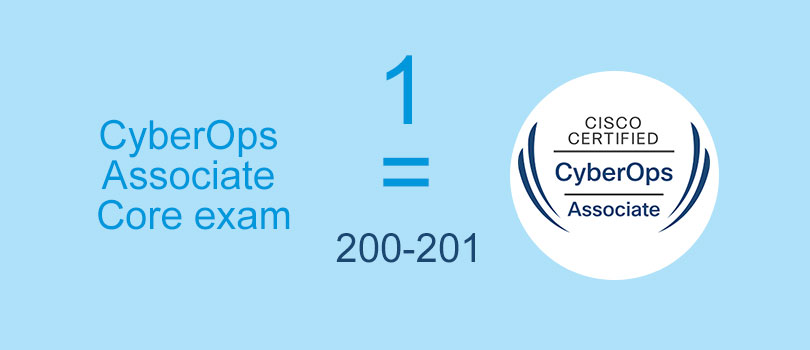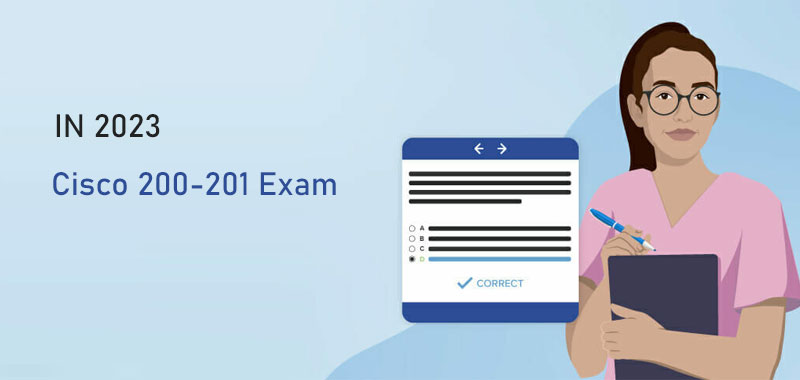200-201 dumps to help you pass the CyberOps Associate Core exam

The 200-201 Dumps is the best exam material for you to pass the CyberOps Associate Core exam. 200-201 CBROPS Exam: “Threat Hunting and Defense with Cisco Technologies for CyberOps.”
The 200-201 CBROPS exam is the only way to get the CyberOps Associate Core exam, you only need to pass one exam to get the CyberOps Associate certification, are you excited?
All Cisco Associate-level exams are unique, but the exams are not easy. Therefore, I highly recommend 200-201 dumps: https://www.leads4pass.com/200-201.html, to help you pass the CyberOps Associate Core exam with ease.
And, we share Cisco 200-201 exam practice online:
Latest Cisco 200-201 dumps exam questions Free sharing
End of article detection answer
Question 1:
Refer to the exhibit.

What is the potential threat identified in this Stealthwatch dashboard?
A. Host 10.201.3.149 is sending data to 152.46.6.91 using TCP/443
B. Host 152.46.6.91 is being identified as a watchlist country for data transfer
C. Traffic to 152.46.6.149 is being denied by an Advanced Network Control policy
D. Host 10.201.3.149 is receiving almost 19 times more data than is being sent to host 152.46.6.91
Question 2:
What does cyber attribution identify in an investigation?
A. cause of an attack
B. exploit of an attack
C. vulnerabilities exploited
D. threat actors of an attack
Question 3:
Refer to the exhibit.

An analyst received this alert from the Cisco ASA device, and numerous activity logs were produced. How should this type of evidence be categorized?
A. indirect
B. circumstantial
C. corroborative
D. best
Question 4:
What is a sandbox interprocess communication service?
A. A collection of rules within the sandbox that prevent the communication between sandboxes
B. A collection of network services that are activated on an interface, allowing for inter-port communication
C. A collection of interfaces that allow for coordination of activities among processes
D. A collection of host services that allow for communication between sandboxes
Question 5:
A security specialist notices 100 HTTP GET and POST requests for multiple pages on the web servers. The agent in the requests contains PHP code that, if executed, creates and writes to a new PHP file on the webserver. Which event category is described?
A. reconnaissance
B. action on objectives
C. installation
D. exploitation
Question 6:
What is the practice of giving an employee access to only the resources needed to accomplish their job?
A. principle of least privilege
B. organizational separation
C. separation of duties
D. need to know principle
Question 7:
Refer to the exhibit.

What is the potential threat identified in this Stealthwatch dashboard?
A. A policy violation is active for host 10.10.101.24
B. A host on the network is sending a DDoS attack to another inside host
C. There are two active data exfiltration alerts
D. A policy violation is active for host 10.201.3.149
Question 8:
Which incidence response step includes identifying all hosts affected by an attack?
A. detection and analysis
B. post-incident activity
C. preparation
D. containment, eradication, and recovery
Question 9:
Which metric in CVSS indicates an attack that takes a destination bank account number and replaces it with a different bank account number?
A. availability
B. confidentiality
C. scope
D. integrity
Question 10:
What is the difference between mandatory access control (MAC) and discretionary access control (DAC)?
A. MAC is controlled by the discretion of the owner and DAC is controlled by an administrator
B. MAC is the strictest of all levels of control and DAC is object-based access
C. DAC is controlled by the operating system and MAC is controlled by an administrator
D. DAC is the strictest of all levels of control and MAC is object-based access
Question 11:
What is vulnerability management?
A. A security practice focused on clarifying and narrowing intrusion points
B. A security practice of performing actions rather than acknowledging the threats
C. A process to identify and remediate existing weaknesses
D. A process to recover from service interruptions and restore business-critical applications
Question 12:
Which type of evidence supports a theory or an assumption that results from initial evidence?
A. probabilistic
B. indirect
C. best
D. corroborative
Question 13:
What is the difference between deep packet inspection and stateful inspection?
A. Deep packet inspection gives insights up to Layer 7, and stateful inspection gives insights only up to Layer 4
B. Deep packet inspection is more secure due to its complex signatures, and stateful inspection requires less human intervention
C. Stateful inspection is more secure due to its complex signatures, and deep packet inspection requires less human intervention
D. Stateful inspection verifies data at the transport layer and deep packet inspection verifies data at the application layer
Verify answer:
| Number | Answers | Illustrator |
| Q1: | D | |
| Q2: | D | |
| Q3: | C | Indirect=circumstantail so there is no possibility to match A or B (only one answer is needed in this question). For sure it\’s not the BEST evidence – this FW data inform only of DROPPED traffic. If smth happened inside the network, presented evidence could be used to support other evidence or make our narration stronger but alone it\’s means nothing. |
| Q4: | C | Inter-process communication (IPC) allows communication between different processes. A process is one or more threads running inside its own, isolated address space. https://docs.legato.io/16_10/basicIPC.html |
| Q5: | C | |
| Q6: | A | |
| Q7: | C | |
| Q8: | D | 3.3.3 Identifying the Attacking Hosts During incident handling, system owners and others sometimes want to or need to identify the attacking host or hosts. Although this information can be important, incident handlers should generally stay focused on containment, eradication, and recovery. https://nvlpubs.nist.gov/nistpubs/SpecialPublications/NIST.SP.800-61r2.pdf The response phase, or containment, of incident response, is the point at which the incident response team begins interacting with affected systems and attempts to keep further damage from occurring as a result of the incident. |
| Q9: | D | |
| Q10: | B | |
| Q11: | C | Reference: https://www.brinqa.com/vulnerability-management-primer-part-2-challenges/ Vulnerability management is the “cyclical practice of identifying, classifying, prioritizing, remediating and mitigating” software vulnerabilities.[1] Vulnerability management is integral to computer security and network security, and must not be confused with Vulnerability assessment” source: https://en.wikipedia.org/wiki/Vulnerability_management |
| Q12: | D | Corroborating evidence (or corroboration) is evidence that tends to support a theory or an assumption deduced by some initial evidence. This corroborating evidence confirms the proposition. Cisco CyberOps Associate CBROPS 200-201 Official Cert Guide |
| Q13: | B |
Non-above exam practice questions
[Google Drive] Cisco 200-201 dumps exam questions online download: https://drive.google.com/file/d/17f3pPGSHs6kDYRM2C8mTea8RPZ7QLQ6z/
The above is a free share of some Cisco 200-201 dumps practice questions, the complete 200-201 dump download address: https://www.leads4pass.com/200-201.html, to help you successfully pass the CyberOps Associate Core exam.

![[New May 2023] Updated 300-425 Dumps For 300-425 ENWLSD Exam](https://www.ciscoexampdf.com/wp-content/uploads/2023/05/Updated-300-425-Dumps.jpg)
